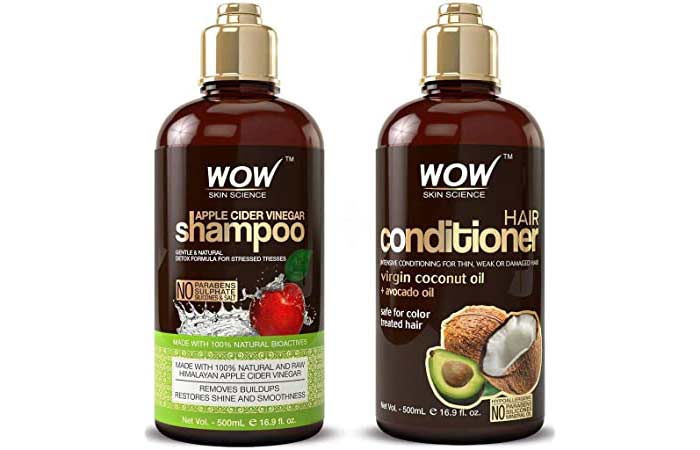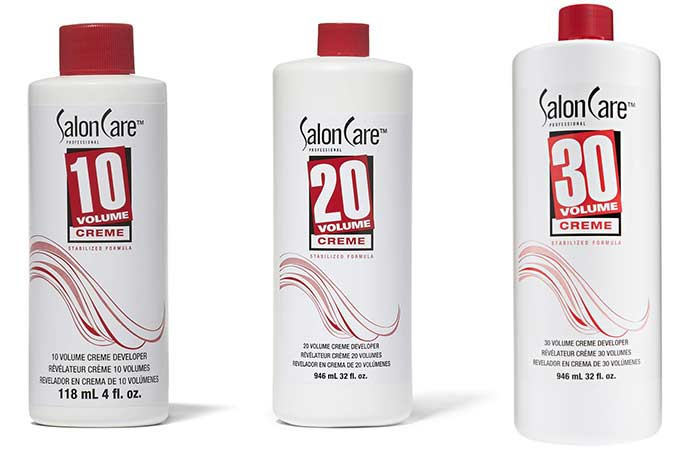Can I Use a Conditioner Instead of a Developer? Hair Conditioner Alternatives
If you’ve dyed or bleached your hair before, you’ve probably experienced dry brittle hair from the procedure and are looking for more soothing ingredients.
You can’t use a conditioner instead of a developer because these two hair products have different hair functions. However, you can use retail hydrogen peroxide or other store-bought oxidizers to replace the developer.
For a better understanding, read more about these two hair products to find out why you can’t use conditioner to replace the developer and what you can use instead of a conditioner
Reasons You Can’t Use a Conditioner as a Developer
The two reasons you can’t use a conditioner instead of a developer boils down to two things;
- Their ingredients
- Their nature
Conditioner Vs Developer
Conditioners have hair ingredients that help you to seal your hair cuticles while introducing moisture and protein into your hair. They come in three main types;
- Moisturizing conditioners
- Deep conditioners
- Leave-in conditioners
These conditioners all contain fatty alcohols, humectants, silicones, surfactants among other ingredients. Depending on the type, it will have even more ingredients. For example, deep conditioners have proteins, amino acids, oils, esters, fatty acids, and other emollients.

Acidifying conditioners contain acids, oxides, and chlorides to harden the hair shaft against damage or breakage. Leave-in conditioners will have catatonic surfactants, polymers, and fatty alcohols.
All these ingredients allow the conditioner to seal in moisture, restructure Keratin in your hair strands, absorb UV rays, and protect against hair damage. To use the conditioner, you should use it approximately two to three days before your dyeing process to seal in moisture in the hair, during the dyeing process to protect the hair cuticles from damage, and after the process to rebuild the hair protein structure.
On the other hand, a hair developer has completely different functions. It’s main ingredient, hydrogen peroxide, is an alkaline solution used to open up the hair cuticles to allow the bleach to lighten or lift your hair color.
It also deposits color in your hair shaft if you were coloring. The hydrogen peroxide in the developer will only activate the chemical bleach or dye leaving the hair strand vulnerable to damage.

You only use a developer in two ways; during bleaching and dyeing for the purposes stated above.
This then concludes that you can’t use the conditioner as a developer because instead of opening up the cuticle, the conditioner will further seal it leaving no room for lifting or coloring of the hair.
Complementary Nature
Another reason you can’t use a conditioner as a developer is that the two can work together. Since we’ve established that they both have their jobs, the two can be used concurrently to achieve the best results for dyeing your hair.
If you mix the conditioner with the hair dye along with the developer, the color will be diluted and less harsh. This makes it a safe option for your dyeing process.
However, note that if you use a conditioner, you need stylish bold colors like electric blue, dazzling purple, or even bright silver. The conditioner will mellow the colors down to a subtle color.
Mixing your hair color with the conditioner and developer will have no negative effects on your hair. The only drawback is that it may not have the desired result you are hoping to achieve, meaning a less bright option.
What Can I Use Instead of a Developer for Hair Dye?
First off, you can’t replace a hair developer as the product was manufactured for those two ideal reasons. Trying to replace it means you’re opting for less satisfying results as no other hair product can do what that developer does.
Nonetheless, if you don’t have a developer to use with your hair dye, you can try commercial hydrogen peroxide found in liquid form to replace the cream developer.
The cream hair developer you get from the store is the safest option you have because it’s regulated and more stable, but it doesn’t mean you can’t use industry hydrogen peroxide. Your only problem would be the measurement. See it needs to have a maximum of 12% concentration or you risk burning your hair off. Other than that, you can use basic hydrogen peroxide liquid.
Another alternative would be chemical oxidizers. There are many options available, you only need to get the most stable. Oxidizers work similarly to developers, it will activate the bleach which then combines with melanin in the hair causing it to break up into smaller ‘colorless’ molecules. Oxidizers would be your last option as it’s not as clean and safe as hydrogen peroxide.
Your final option will have to be using hair dyes that don’t require a developer. These include;
Plant-Based Colors
Plant-based dyes originate from plants such as henna, indigo. Red wine, tea, walnut, and camomile. These plant-based colors are the safest and don’t need alkaline agents to activate them. You only need to mix the plant ingredient with hot water and form a paste. Apply to the hair and leave on for about an hour.
Semi-Permanent Colors
These semi-permanent hair dyes are very easy to apply as they coke ready for application. They don’t need any developers and you’re only supposed to mix the colors and apply them to the hair. No oxidative processes and no substitutes are needed.
Demi-Permanent Colors
Lastly, demi-permanent is a mixture of permanent and semi-permanent hair dyes. Demi-permanent colors will contain a mix of developed direct pigments and undeveloped para-hair colors. The hair color precursors are oxidative and will need to react with oxygen to develop.
However, you don’t need the cream developer with a 6% concentrate. You can mix the dye with a weak hydrogen peroxide solution.